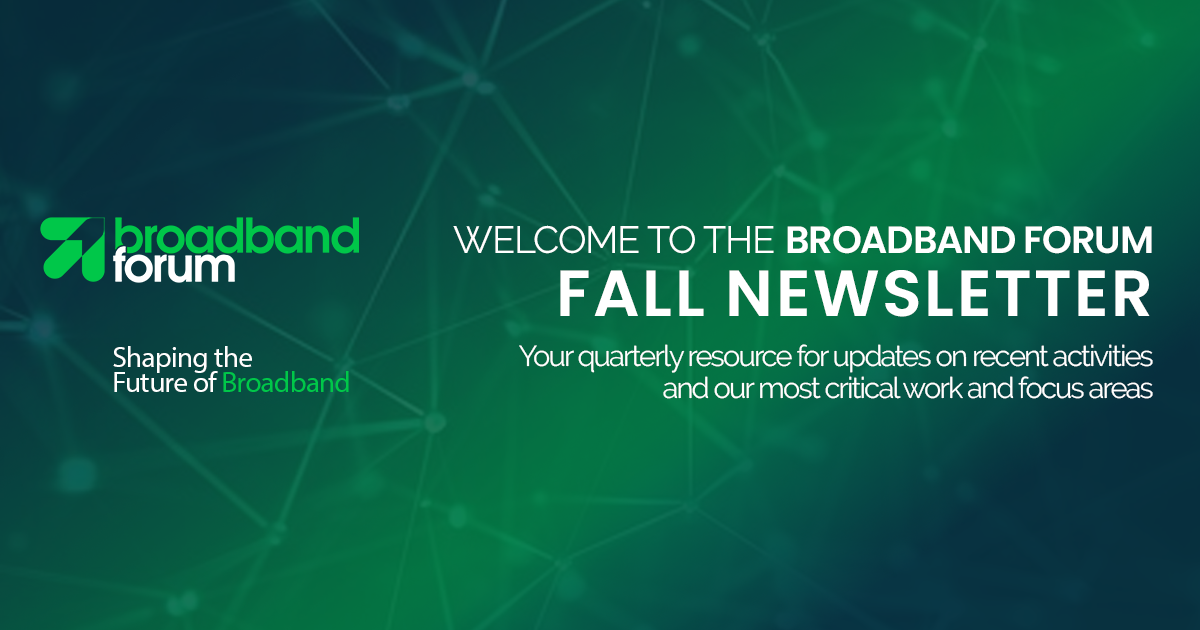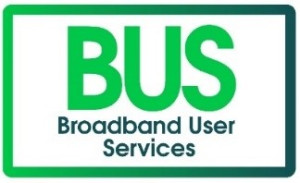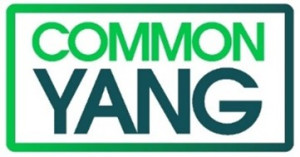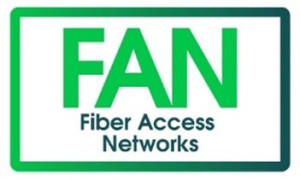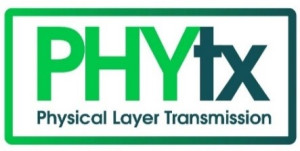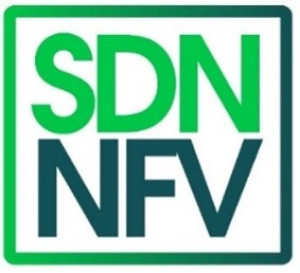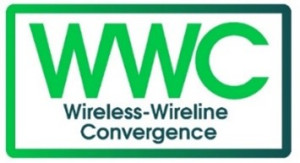A welcome from our leadership – Lincoln Lavoie, Technical Chair at the Broadband Forum and Principal Engineer at UNH Interoperability Labs (UNH-IOL)
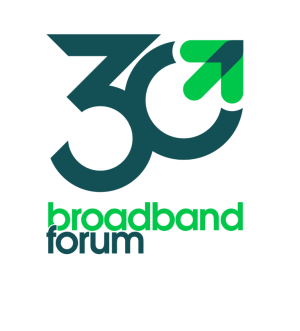 The Broadband Forum had much to celebrate during our Fall member meeting in San Diego. New and exciting projects are underway, the flagship smart home standard TR-069 has become 20 years old, and the organization marked a momentous milestone of 30 years of making broadband a reality.
The Broadband Forum had much to celebrate during our Fall member meeting in San Diego. New and exciting projects are underway, the flagship smart home standard TR-069 has become 20 years old, and the organization marked a momentous milestone of 30 years of making broadband a reality.
In my role as Broadband Forum’s Technical Chair, I am lucky to work with all the Work Area Directors and help drive the focus and direction of their work. Here in San Diego the relevancy of that work has never been exemplified more. We witnessed great interaction and productive collaboration between all of our member companies.
As we move to an increased focus on “Services-Led Broadband” it was my pleasure to announce in our closing plenary a restructuring of our Work Areas to align with this focus that will take effect from our next meeting in Spring 2025. More information on that effort will follow shortly.
– Lincoln Lavoie, Technical Chair at the Broadband Forum and Principal Engineer at UNH Interoperability Labs (UNH-IOL)
A Collaborative Legacy: 25 Years with UNH-IOL in Broadband Forum Testing
 As we celebrate three decades of innovation and collaboration, the Broadband Forum proudly recognizes this milestone in our continued mission of making broadband a reality. Since 1994, BBF’s leadership in developing network standards has been a keystone in the success of our global broadband community.
As we celebrate three decades of innovation and collaboration, the Broadband Forum proudly recognizes this milestone in our continued mission of making broadband a reality. Since 1994, BBF’s leadership in developing network standards has been a keystone in the success of our global broadband community.
A key part of the BBF mission is to ensure interoperability among the broadband components service providers use worldwide. The BBF has played a crucial role in establishing network standards and best practices essential for the global broadband community. As a partner of the BBF for over 25 years, IOL’s ongoing collaboration has helped lead to significant advancements in broadband technologies, ranging from ADSL (G.992.1) to 50-gigabit Passive Optical Networks (PON).
Our labs are dedicated to data networking standards and compliance testing to ensure device interoperability, conformance, and certification of industry standards. As an approved test lab for the BBF, IOL offers formal testing and product certification programs for BBF.398 Carrier Grade Wi-Fi and, soon, the BBF.247 PON certification program.
As the Technical Chair of the BBF, I am proud of the members’ collective achievements over the past three decades, and I look forward to the opportunities that the next 30 years will bring. Read on to discover how IOL drives the global broadband ecosystem forward through our innovative initiatives with the Broadband Forum, emphasizing a “Service-Led Broadband” approach.
Read Lincoln’s full story of UNH-IOL’s broadband journey on its website here.
Welcome from our meeting sponsor: Motive
![]() Those in attendance were treated to two presentations from Motive on the opening day of the members meeting. In addition to Colin Grealish, Product Director at Motive delivering the first of six Town Hall Innovation sessions, Jeevithan Muttu took the stage. The VP Product and R&D talked about Motive’s suite of cloud-native solutions to connect, monitor, and manage broadband access, and billions of CPE and IoT devices.
Those in attendance were treated to two presentations from Motive on the opening day of the members meeting. In addition to Colin Grealish, Product Director at Motive delivering the first of six Town Hall Innovation sessions, Jeevithan Muttu took the stage. The VP Product and R&D talked about Motive’s suite of cloud-native solutions to connect, monitor, and manage broadband access, and billions of CPE and IoT devices.
Aligning with Broadband Forum’s continued vision, Muttu pointed to two distinctive broadband market trends that must remain front and centre of broadband service providers’ focus. Seamless connectivity and reliability are two attributes that underscore the common perception that the customer expectation has changed. As BSPs look to differentiate their services, Muttu pointed out that there is increased emphasis on analytics and insights.
Muttu offered a warm congratulations to the Broadband Forum and advised that a key pillar of its overarching success was due to industry-wide collaboration.
Work Area Updates
For the full list of all Technical Reports published by Broadband Forum, click here. Please feel free to share this information with your colleagues so they are engaged with and aware of the developments of this work. For additional insight and to get involved, sign up for access to Broadband Forum tools and access your account using your company email address.
ATA publishes two new documents and makes headway on new L4S project
Target: The Access & Transport Architecture (ATA) Work Area maintains the primary architectural work of the Broadband Forum. The group delivers scalable, dynamic, and flexible architectures to support highly resilient connectivity for the next generation of responsive services and applications. ATA’s focus includes specifying frameworks and real-time tools to deliver dependable connectivity and service performance.
Progress: The ATA Work Area published ‘Broadband Service Metrics’ TR-499 which identifies metrics and KPIs that impact service delivery and ‘Maximum IP-Layer Capacity Metric’ TR-471 Issue 4, updated for Multi-flow and Multi-Server testing.
The ‘Application of L4S to Broadband Networks’ WT-519 continues to move forward at pace, defining how to implement L4S capability into a broadband network. The second joint meeting with WWC took place during the Fall meeting, building on the successful first meeting that had insightful presentations from CableLabs and Nokia introducing and explaining the details of the project. WT-519 will allow broadband service providers to offer services that can support the requirements of latency sensitive applications at the same time as throughput sensitive applications.
Multi-Service Disaggregated BNG WT-459 Issue 3 and WT-459.2 Issue 2 were both sent to Final Ballot by the AA Project Stream. The latest version of WT-459i3 offers updated QoS and Access Control List (ACL) capabilities, with new use cases and call flows. Additionally, it introduces several key enhancements including improved resilience with Subscriber Groups (SGRP) for IP prefix management, and optimized subscriber management with better session state handling and AAA functions. Even more features and capabilities are planned in the upcoming Issue 4.
More widely in the AA Project Stream, work continues on ‘Security Considerations for IPv6 Broadband Networks’ WT-515, which aims to provide development considerations and enhance IPv6. The work area has also continued to make progress on the architecture of ‘Subscriber Session Steering’ WT-474, where there were great discussions on the lessons learned from the BBF Innovation Demos, as well as working through important updates on resilience and QoS.
In the PEAT Project Stream, our new project ‘Time to First Byte’ WT-518 has now been expanded to ‘Time to Event’ to enable a standard approach for a wider range of measurements. Work continued on In-Situ OAM, multicast measurements and measurement formats for the QED project (452 document series), which will enable greater insights into latency across the broadband network.
For more information on ATA Work Area’s ongoing work, visit: https://wiki.broadband-forum.org/display/BBF/Access+and+Transport+Architecture.
What’s the Matter with BUS? Efforts underway in the quest for less smart home fragmentation
Target: Explore the necessary work for delivering an operator-grade smart home and improving the subscriber experience.
Outcome: The Broadband User Services (BUS) Work Area started work on combining the Matter protocol with the User Services Platform (USP), held a successful interoperability plugfest, and explored energy efficiency management and monitoring in broadband gateways.
When integrated with the USP, the Matter protocol will enable BSPs to deploy compatible devices in the smart home faster and manage them more easily. Today, Matter networks and devices – such as a TV or speaker – are controlled via fragmented applications from multiple vendors. USP will allow all supported devices to be managed, monitored, and controlled by a standards-driven application regardless of the brand in use. The specification ‘MatterService Data Model for USP-enabled Devices (WT-517)’ is set to be completed by Summer 2025.
The group continues to collaborate and drive these initiatives forward with joint members of the Connected Standards Alliance and the Wireless Broadband Association.
The results of a successful plugfest event held in September at the UNH-IOL facility in Durham, New Hampshire, were reviewed, and plans are in the works for a plugfest to be held early next year.
BUS’ Subscriber Networking Project Stream discussed the guidelines for operator device requirements and performance metrics in the next versions of Functional Requirements for Broadband Residential Gateway Devices (WT-124) and Wi-Fi Residential & SOHO Performance Testing (WT-398i4). The test plan includes testing for newer Wi-Fi technologies and aims to enhance Wi-Fi management and performance, aligning with the modern needs of operators and deployment scenarios.
A best practices guide titled ‘Transitioning from TR-069 to TR-369 (USP): A Guide for ISPs’ has been published. This paper reviews multiple approaches for providers to transition from TR-069 to USP, including separate systems per protocol, USP for special cases, hybrid with shared information, and native multi-protocol implementation.
Take a look at the BUS Work Area’s latest work: https://wiki.broadband-forum.org/display/BBF/Broadband+User+Services.
TR-383 Amendment 8 publication is paving the way for deep network learning
Target: Specify YANG modules that are applicable to multiple work areas, provide support to those same work areas for their specific YANG projects, and maintain YANG Best Current Practices, processes, procedures, and tools.
Progress: The Common YANG Work Area is playing a supporting role for the SDN/NFV and FAN Work Areas, with a view that YANG models will be incubated in a series of ongoing projects. The work area continues to review new functionalities targeting future amendments of TR-383.
Outcomes: Publication of Amendment 8 of TR-383; agreed on the scope of Amendment 9; agreed to refactor the Layer 2 forwarding YANG model for use in templates defined in WT-513, addressing the scale of managing large access network elements.
Another milestone has been achieved with the publication of Amendment 8 of the group’s flagship project, TR-383 ‘Common YANG Modules for Access Networks’. This publication sits at the heart of Common YANG’s output and allows copper- and fiber-based access nodes to be managed through NETCONF/YANG. The new amendment includes extensions to ITU-T Ethernet OAM, and support for IP hosts, Subscriber identification and Internet Protocol Flow Information Export (IPFIX). This allows large-scale bulk statistics collection, enabling network analysis using cloud-based platforms, providing opportunities for deep network learning.
The group agreed on the scope of the next Amendment 9 of TR-383. This amendment will bring the YANG model for VoIP, extending BBF YANG management support to nodes offering traditional voice services over a packet-based network. Alongside this, the amendment will add a range of improvements related to QoS, forwarding and transceiver management. The target is to publish Amendment 9 by the Summer Meeting in June 2025.
It was agreed to refactor the Layer 2 forwarding YANG model to ease its use as part of a template-based solution to be defined in WT-513, “Access Node Management at Scale”. This project targets improvement to the overall scalability of the YANG models.
Energy and Power Monitoring remain hot topics, with several contributions being discussed and the group agreeing on capturing the key requirements and reaching out to Broadband Service Providers, network operators, and other experts to define the future focus of the work.
Common YANG has played a key supportive role for other work areas aiming to develop and publish YANG models. To that end, sessions were held with the SDN/NFV and FAN Work Areas, reviewing items of common interest.
For an overview of the Common YANG Work Area’s current activities, please visit: https://wiki.broadband-forum.org/display/BBF/Common+YANG+Work+Area.
PON Interoperability Plugfest success for FAN, with plans for more
Target: The Fiber Access Networks (FAN) Work Area specifies and maintains PON architecture and nodal requirements, PON abstraction and mobile backhaul requirements. It is also responsible for PON test suites related to PON conformance and interoperability, and compliance test plans related to XGS-PON, NG-PON2, 25GS, 50G-PON, and Physical Medium Dependent (PMD)/Transmission Convergence (TC) Layer. Lastly, it is responsible for PON YANG data model specifications.
Completed:
FAN has published the following updated working texts and test plans:
- PON Requirements: TR-167 Issue 4 PON-fed, TR-101 Ethernet access node, and TR-331 Issue 2 Architecture & Technical Requirements for PON based mobile backhaul network
- TP-247 Issue 4 Corrigendum 1: ONU Conformance Test Plan
- TP-255 Issue 2: OLT-ONU PON Interop Test Plan
In Progress:
The FAN Work Area has made initial inroads on its Energy Power Saving Requirements, Test Plan, and Data Model. It was agreed that further collaboration is needed to provide the requirements that can be used. Future contributions are encouraged.
Events:
FAN is involved in multi-year PON plugfests for XGS, 25GS and 50G HSP PON systems.
- A successful PON Plugfest was held with CableLabs in September, with testing taking place on XGS-PON OMCI and 25GS-PON TC-PMD, which is summarized in this brief video.
- A PON Plugfest will be held on February 24-28 with A&T Labs and LANPARK. The scope of the plugfest will focus on 25GS-PON TC and OMCI, and 50G HSP TC Layer. Registration is now open, visit: https://www.broadband-forum.org/event/pon-plugfest-at-att-february-24th-28th-2025
- A Summer PON Plugfest in LANPARK’s test laboratory is being planned. Please stay tuned for more details.
For more on the FAN Work Area’s ongoing projects, please see: https://wiki.broadband-forum.org/display/BBF/2024+Fall+Meeting+-+Fiber+Access+Networks+Meeting+Minutes.
PHYtx Work Area continues developing MoCA AccessTM Performance Test Plan
Target: To enable multi-vendor interoperability in deployments for both access and in-premises networks.
Progress: The work area published amendment 3 to TR-301 Issue 2 as well as a corrigendum on TR-285 Issue 2.
Amendment 3 to TR-301i2 added bulk data collection using IPFIX (Internet Protocol Flow Information Export) for Distribution Point Units (DPUs) deployed in Fiber To The distribution point (FTTdp) architecture.
The corrigendum to TR-285i2 clarifies the coaxial cable model that will be used for calculating the coaxial cable attenuation. This update supports the ongoing work on WT-500 that refers to this model.
Development of the WT-500 “MoCA Access Performance Test Plan” continued, fine-tuning configurations and test procedures. The plan is to progress the document to Straw Ballot by the 2025 Spring Meeting. MoCA Access is one of the technologies that can be used for FTTdp deployments as described in TR-419.
An anonymous operator survey that aimed to identify key opportunities and challenges of the MGfast/Gfast access technology over twisted telephony pair and/or coax, has now been completed. It shows that 70% of the respondents see these as fiber extension technologies in line with TR-419. However, some challenges remain and will need to be resolved in the future. To address this, the PHYtx group is considering starting a new project on MGfast. The technology promises higher internet speeds of up to 8 Gbps over existing copper wiring.
For further insight into the current work of the Physical Layer Transmission Work Area, visit: https://wiki.broadband-forum.org/display/BBF/Physical+Layer+Transmission.
SDN/NFV makes significant progress on CloudCO architecture and interfaces in the quest for more autonomous networks
Target: The SDN/NFV Work Area focuses on the introduction of Software Defined Networking (SDN) and Network Functions Virtualization (NFV) in conjunction with general purpose hardware to create the basis for cloud-based, edge, and access networks. Building on this framework, the work area addresses migration and coexistence of physical and virtual elements, into the broadband network, define interfaces, test cases, use cases and scenarios, reference implementations, and automation.
Progress: The main focus is CloudCO architecture and interfaces, Automated Intelligent Management (AIM), and Broadband Network Data Collection (BNDC).
Outcomes: WT-451a1 will go into Final Ballot and will be published soon.
The architecture of CloudCO (WT-384i2) was completely revised in order to expand the applicability, better define the responsibility of each component, and to extend the deployment of cloud-native network functions (CNFs) in CloudCO.
The Tiger Team on CloudCO interfaces (WT-454i2) agreed to sunset the old data models and move forward with new ones based on IETF recommendations.
The Tiger Team on Intent Based Interface (IBI) held calls with TM Forum (TMF) to understand how an intent-based interface should be defined (expectations, target, conditions). The next steps include holding a workshop with TMF and defining the use cases.
WT-413i2 on SDN Management and Control interfaces will incorporate a new section on BNG and DBNG. Regarding WT-414, it was agreed that the NPIF will be reviewed to define both interoperability and conformance tests for the interface between the SDN Controller and Access Node.
New pull requests have been opened for data models related to vDBA (WT-403a1) and to BGP and MPLS (WT-477i2). If the one related to vDBA is approved, WT-403a1 will move to Final Ballot.
Automated Intelligent Management (WT-436i2) and Data Collection (WT-508) will need further discussion and alignment to better define the integration in the CloudCO environment. More discussions are also needed to define the necessary protocols and definitions for data collection.
More information about the SDN/NFV Work Area can be found at: https://wiki.broadband-forum.org/display/BBF/SDN+and+NFV.
WWC progresses CPE requirements for IMS for 5G-RG and aligns with guidance from BSP survey on Multi-tenant FWA
Target: Deliver more value with deployment options for integrated, wireline, and mobile operators and suppliers. Optimization of the Total Cost of Ownership (TCO) by consolidating the network, common control plane, and streamlined backend by a comprehensive, well-specified, deployed Wireless-Wireline-Convergence architecture and functions to deliver broadband services with the 5G Core.
Progress: Broadband Forum has made the convergence of broadband access with the 5G core a reality and is enriching the industry with value-added features of the 5G system. Productive cooperation with 3GPP is continuing, as is the progress of the WWC Work Area in three active Project Streams: 5G, Multi-tenant FWA, and IMS for 5G-RG.
Outcomes: A new set of capabilities and enhancements, subsuming more of the capabilities of the 5G system, whilst specifications and marketing document are in progress. Ongoing work in the WWC Work Area focuses on bringing more value to 5G for wireline and provide operators with increased flexibility, revenue potential, and deployment options. The goal is to increase the service capabilities of the network to allow operators to fully leverage convergence, while simultaneously providing more paths to transition to a single core network.
The work area continues to incorporate capabilities from the 5G Toolkit into specifications for a variety of use cases. These cover a wide spectrum and include hybrid access, enhanced work from home, and convergence of voice with the mobile system. This work will allow operators to provide a uniform experience to their customers irrespective of the access or appliance they are using, supported by a common and streamlined back office and control plane.
Expanding the deployment options for WWC, the Phase 18.1 work (in conjunction with 3GPP Release 18) addresses reliability of AGF CUPS, hybrid access, network data analytics, and support for devices behind a 5G-RG. Progress continues on key documents, WT-456 Issue 3 (AGF Functional Requirements), WT-470 Issue 3 (5G Wireless Wireline Convergence Architecture) and WT-458 Issue 2 (CUPS for 5G Wireless Wireline Convergence). The group can start addressing the new issue of WT-458, now that ATA‘s WT-459i3 act as a stable reference point.
Continuing collaboration with fellow Broadband Forum work areas, joint discussions between WWC and ATA on ‘Application of L4S to Broadband Networks’ took place. They identified key (security and legal) aspects and deployment priorities. We are calling for contributions on identified aspects.
The IMS for 5G-RG Project Stream has completed its main work item (residential voice profile specification) and is going to be closed by the end of the year. The respective work on CPE device management requirements and data modelling for IMS for 5G-RG will continue in the BUS Work Area. This is based on TR-493 (IMS for 5G-RG Architecture) and TR-494 (IMS for 5G-RG Residential Voice Requirements), enabling the convergence of legacy voice services onto the 5G system, and complements the WWC Phase 16.3. WWC brings the requirements related to functions and capabilities that are required to be supported by 5G-RG and deliver IMS-based voice services.
The work on extending Fixed Wireless Access to serve Multi-Tenant Units (MTUs) with Gigabit connectivity has been structured into two phases (IP PDU and SoftGRE for Phase 1 and Ethernet PDU for Phase 2). The recent BSP survey was reviewed to help assess and prioritize use cases, deployment scenarios and proposed architecture. There was global industry and BSP interest, with the concept and approach aligning with industry expectations.
The work area has also progressed accompanying work on marketing and education, including three marketing documents under development. MD-470 (Value of WWC) is nearing completion and has now resolved Straw Ballot comments, while the work on MD-506 (5G Hybrid Access) is still in an early stage.
Building on the momentum of the successful WWC demo showcase at Network X 2024, which included a 5G-RG, there is an opportunity to collaborate in the BBF Open Broadband Project OB-5WWC for Open-Source OS (RDK, prpl). Interested parties are encouraged to get in touch.
While resources on Multi-tenant FWA and WWC Phase 18.1 were recently released, the ongoing marketing work continuously offers great opportunities for BBF members to engage with.
For more on the WWC Work Area, please see: https://wiki.broadband-forum.org/display/BBF/Wireless-Wireline+Convergence.
Full steam ahead for OB-CAS with open API framework goal
The Open Broadband CloudCO Application Software Development Kit (OB-CAS) is aiming to make monitoring and maintenance easier for BSPs, enabling them to easily integrate applications into their access network management platforms. Alongside this, BSPs will have a greater selection of fit-for-purpose applications from a community of software vendors. The OB-CloudCO Application SDK team continues its journey in developing an open API framework through which applications can interact with an access domain controller. These applications typically consume and analyze network data for enhancing or automating service assurance.
OB-CAS efforts have recently focused on developing a prototype PON alarm correlation application which was demonstrated as part of the OB-CAS BBF innovation demo at Network X in Paris. A sandbox environment was created that leverages OB-BAA core as an access domain controller platform as well as OLT and ONU simulators.
Through the Opensearch API, the alarm correlator application can consume all alarms generated by the (simulated) network and reported through the controller, detecting correlated alarms with its correlation engine and topology input. Via Google Maps, a visualizer shows all current PON alarms and possible root cause based on the alarm correlation application output. Scripts that trigger alarms (such as a fiber or power cut) were used to drive the demo.
Moving forward, OB-CAS will add new APIs such as KAFKA, FluentD and Open TSDB in its SDK. Open TSDB is an efficient way to store a time-series of KPIs/metrics retrieved via telemetry from the network. The OB-CAS team has agreed to study and develop a fingerprint application which can detect anomalies in a running time-series of metrics without using pre-defined and/or manually set thresholds on the network elements.
Management and data analysis software application providers are invited to join the project to help shape the API requirements and test and grow the SDK to see how their applications can operate in a CloudCO environment.
To learn more about the OB-CAS project’s ongoing work, please see: https://wiki.broadband-forum.org/display/OBCAS/OB-CAS+Home.
OB-MAP continues collaboration with BUS and prpl to advance Wi-Fi data modeling
The Open Broadband – Multi Access Point (OB-MAP) and prpl Foundation’s prplMesh projects are establishing a baseline vision of how data and control commands for Wi-Fi will be represented in TR-181. This will influence the design of the APIs presented by prplMesh.
OB-MAP is continuing to progress two key areas of focus. This includes defining Configuration Templates, which are convenient new tools that the operator can use to configure differing Wi-Fi services, radios, and device types across a wide number of devices. Alongside this, the group has been defining a new part of the TR-181 data model to represent topology in a comprehensive and understandable format, using the IEEE 1905 standard.
The data model and prplMesh APIs are meeting the diagnostics and management needs of service providers that use multiple physical layer networking technologies to deliver ever-increasing broadband bandwidth and innovative services through complex home networks to end-user devices. This has had an impact on the progress on prplMesh’s Northbound API (NAPI).
The OB-MAP project team will continue to collaborate with the BUS Work Area and the prpl Foundation on requirements and feature prioritization, and data modelling of multiple devices and services in a mesh network.
To learn more about the OB-MAP project’s ongoing work, please see: https://wiki.broadband-forum.org/display/OBMAP/OBMAP+Home.
OB-STAMP gathers momentum, first vendors join project
The OB-STAMP (Open Broadband – Simple Two-Way Active Measurement Protocol) tool aims to reduce the cost and time of deploying and implementing infrastructure for measuring network latency in broadband service provider (BSP) networks. Broadband Forum standards, including Quality of Experience Delivered (QED) and User Services Platform (USP), will play a key part.
OB-STAMP is providing an easy-to-deploy component that simplifies network performance data generation, collection, and analysis. This data is crucial for training and operating AI deep learning tools, which are key enablers of the Automated Intelligence Management (AIM) framework. The project allows BSPs to proactively monitor their networks to avoid network failures.
The open-source project is developing a STAMP Sender and Reflector that will be fully compatible with RFC 8762 and its associated extensions, to be installed on Customer Premises Equipment (CPE).
The overarching aim of the project is to develop a component outlined in the TR-390.2 document, enabling greater performance measurement between the CPE and the IP Edge. The TR-390.2 Amendment 1 document also outlines the feasibility of using the STAMP protocol to record performance measurements in the subscriber home network.
The first four vendors (Domos, Outsys, Radisys, and UNH-IOL) have signed up to join the efforts. A guest from the University of Cincinnati also attended the Fall members meeting to learn more about how the project will benefit the education sector.
OB-STEER project begins in the quest for simplified network management
During the meeting, it was confirmed that OB-STEER can officially start work. The project provides greater efficiencies for automation and traffic optimization within the network to help preserve the end-user’s experience. Building on Broadband Forum’s upcoming technical report WT-474, OB-STEER is creating a reference implementation of the Subscriber Session Steering architecture to deliver flexible, on-demand connectivity and simplify network management.
Interoperability of Subscriber Session Steering is of utmost importance as it will be implemented in access network equipment of various vendors. OB-STEER therefore aims to reach out to vendors to agree on implementation options that remain compatible.
If you would like to get involved in the project, please contact [email protected].
OB-USP-Agent publishes Ibis with focus turning to Jackdaw release; integrations rolled out with open-source communities
The OB-USP-Agent (OBUSPA) team recently published Release 9 (Ibis release). It addresses some community identified defects and provides minor enhancements mostly related to the MQTT MTP (Message Transfer Protocol) implementation. So far, the group has applied three patches to this release and the GitHub codebase.
The open-source software from OBUSPA has been part of upstream integrations with open-source communities prpl Foundation and RDK. OBUSPA is a key component in open-source middleware solutions (e.g., prplOS and RDK-B) as it enables the remote management of the device and opens up the possibility to decentralize the device’s data model into USP-enabled containerized applications.
Release 8.0.7 has been integrated into the prplOS 3.1 release and plans are in place to up-step the 9.0.x release into the upcoming prplOS 3.1.1 release. The previous release (Heron) was the first OBUSPA code to be integrated into prplOS.
Release 8.0.3 has been integrated into the RDK-B 2024 Q3 release. Along with some RDK driven updates to migrate from the CCSP API to the RBUS API, the organization is looking to also up-step to a 9.0.x release with a future RDK-B release.
Attention now turns to Release 10 (Jackdaw release) which currently has an anticipated release date of Q1/Q2 2025. So far, plans are in place for the release to incorporate updates to align with changes to the USP 1.4 specification and the USP Test Plan v1.3 as well as the introduction of the MQTT bulk data collection mechanism.
The OBUSPA team is continuing to work with QA Cafe to develop and implement a plan for executing USP compliance testing against new major releases of OBUSPA and the best options for making these reports available for downstream consumption.
For more information about the team’s latest work, visit: https://wiki.broadband-forum.org/display/OBUSPA/OB-USP-Agent+Home.
OB-5WWC takes stock from successful live demo involvement
Open Broadband-5WWC (OB-5WWC) is an open-source project focused on bringing the full benefits of the 5G ecosystem to fixed-line services and offering a full end-to-end solution to operators. The aim is to create a reference implementation of the Broadband Forum specified Wireless-Wireline Convergence solution for 5G capable Residential Gateways (5G-RGs), providing shorter time-to-market for products and reduced development times and cycles.
OB-5WWC also seeks to provide a solution stack suitable for integration with OpenWRT/RDK-B frameworks and to provide a reference for testing Access Gateway Function (AGF) and RG test tool development.
Current Progress: Project members have supported activities for improving relevant data models for cellular interface management in the BUS Work Area.
The group continues its progress with the architecture, design, and alignment with OpenWRT and RDK-B and gaining clarification of RG deployment scenarios. The team has documented RG deployment, architecture, and modeling aspects.
The group now turns its attention to building on the momentum and success of its involvement in the showcase at the BBF Innovation Demonstration at Network X. OB-5WWC member Deutsche Telekom has expressed its willingness to contribute relevant pieces of its 5G-capable Residential Gateway implementation demonstrated at Network X to the OB-5WWC project, provided there is enough interest and engagement from the community. The project team encourages interested parties, reviewers and contributors to get actively involved to leverage the opportunity and speed up the development.
David Woolley is leaving Telstra in December and will no longer be their representative. However, David will be continuing in his role as Co-Project Leader of the project. Based on the success of the Network X demonstration, David is looking forward to taking the project to the next level.
For any interested parties (including non-Broadband Forum members) that wish to be part of the project, please sign the project participation agreement online here.
For more on the OB-5WWC project’s current work, please see: https://wiki.broadband-forum.org/display/OB5WWC/OB-5WWC+Home.
Welcome to our new and returning members!
We welcomed a mix of new members and guest companies during the Fall Member Meeting 2024. We had 141 registered attendees, with 12 first-time attendees and seven guests from six companies. Our 13 new members included: Axyom.Core, Cortina Access, EasySolutions, embeDD, Hotwire Communications, Mitsubishi Electric, Precision OT, START, Streambow, Tbaytel, Tozed Kangwei, TraceSpan, and Ubee Interactive.
The six guest companies were Harmonic, Optimum, SK Broadband, Telecom Fiji, Ubee Interactive, and VeEX.
Are you interested in becoming the newest member of the industry’s leading standards body for defining broadband networks? Broadband Forum membership will not only accelerate your company’s progress but enable you to become a key influencer developing 5G, the cloud, the connected home and access networks.
We have a range of membership options for companies of all sizes, from startups to large corporations and not-for-profit organizations. Our new regional Operator Membership category has further opened participation; take a look for further details of the access level privileges, benefits and requirements.
To learn more about the benefits of membership, watch the video interview with Rhonda Heier, Director of Membership Development, discussing the value of the Broadband Forum membership here or email [email protected] for more information.
Upcoming BASEe events
- May 20-22 2025, Network X Americas, Dallas, United States
- June 1-4 2025, FBA (Fiber Connect), Nashville, United States
- June 3-5 2025, AngaCom, Koln, Germany
- June 26-27 2025, BASe Technical Summit, Munich, Germany
- September 29–October 1st, 2025, TechExpo, Washington D.C., United States
- October 14-16, 2025, Network X, Paris, France
Save the dates! Broadband Forum face-to-face meetings
- March 11-14, Spring 2025 Meeting, Hong Kong, Asia
- June 23-26, Summer 2025 Meeting, Munich, Germany
- November 17-20, Fall 2025 Meeting, TBC, Americas
Upcoming PON Plugfest
Keep up to date on our latest activities and whereabouts!
Follow us on LinkedIn (@Broadband Forum) and subscribe to us on YouTube (@BroadbandForumVideos) for more BBF content.
Contact information
Questions or ideas? Contact the Broadband Forum on +1 510.492.4020 or email [email protected].
